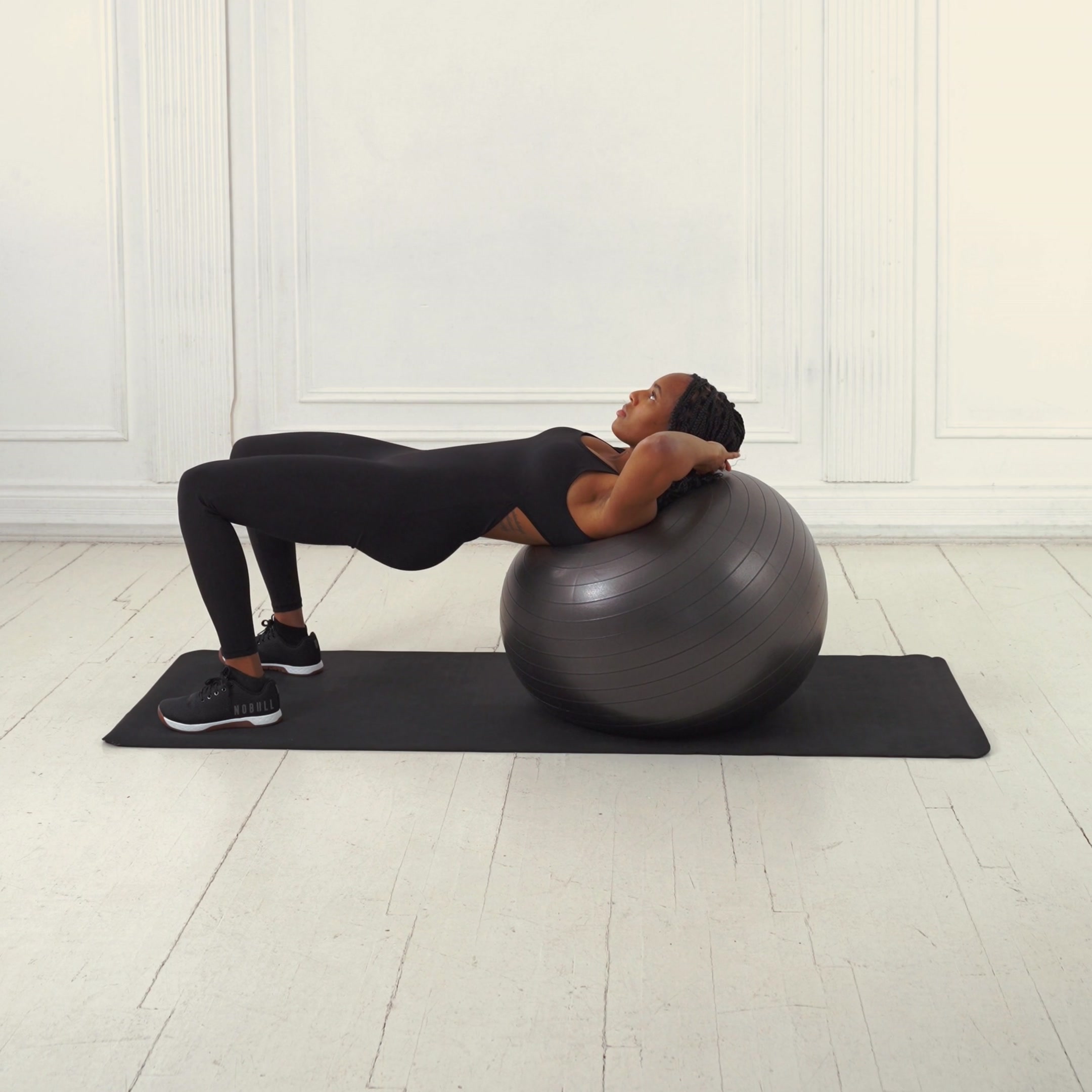Stability Ball Hyperextension
Stability ball hyperextension that targets erector spinae, glutes, and hamstrings to strengthen the posterior chain and improve core stability; uses instability for enhanced balance and posture.
About Exercise
Equipment
Stability Ball
Difficulty
3/5 • Intermediate
Primary Muscle Groups
Lower Back, Glutes
Secondary Muscles
Abs
Popularity Score
6
Goals
Training Style
Setup Requirements
Requires Rack
No
Requires Bench
No
Requires Spotter
No
Space Needed
Small
Noise Level
Low
Muscle Breakdown
View Muscle MapLower Back
10/10Erector Spinae
Glutes
8/10Glute Max
Hamstrings
7/10Biceps Femoris
Abs
5/10Transverse Abdominis
Programming
Typical Rep Range
10-15 reps
Rest Between Sets
60-90 seconds
How to Perform
Lie face down over a stability ball with hips centered on the ball and feet anchored against a wall or held by a partner. Cross arms over chest and allow torso to round forward.
- Engage core and squeeze glutes to lift torso upward.
- Extend spine until body forms straight line from head to heels.
- Pause briefly at the top.
- Lower torso slowly back to starting position.
- Maintain control throughout the descent.
Coaching Tips
Form Cues
- Keep core tight
- Squeeze glutes at top
- Avoid arching lower back
- Move slowly and controlled
Breathing
Inhale as you lower your torso; exhale as you lift and squeeze at the top. Brace core before initiating movement.
Tempo
3-1-1
Range of Motion
Start with torso rounded over the ball; extend to a straight line from head to heels without hyperextending the back.
Safety
Safety Notes
- Secure feet to prevent slipping
- Stop if you feel lower back pain
- Use a properly inflated ball on stable surface
- Avoid if you have acute back injuries
Spotting
Have a partner hold your feet for stability; not typically needed for spotting the lift itself.
Common Mistakes
- Overarching the back
- Not anchoring feet securely
- Using momentum instead of muscle control
- Letting gravity drop during descent
When to Avoid
- Acute low back pain
- Herniated discs
Flexibility Needed
- Adequate spinal flexibility
- Hip mobility for positioning
Build Up First
- Basic core bracing competency
- Familiarity with bodyweight extensions
Also known as
Stability Ball Back Extension, Swiss Ball Hyperextension
Found this helpful?
Share your thoughts or help us improve this guide.
Similar Exercises

Stability Ball Hip Thrust
Stability Ball
Glutes

Stability Ball Glute Bridge
Stability Ball
Glutes

Stability Ball Back Extension
Stability Ball
Lower Back

Stability Ball Wall Squat
Stability Ball
Quads

Stability Ball Single-Leg Glute Raise
Stability Ball
Glutes

Stability Ball Plank
Stability Ball
Abs

Stability Ball Sprinters
Stability Ball
Abs

Stability Ball V-Up
Stability Ball
Abs

Dumbbell Stability Ball Wall Squat
Dumbbells, Stability Ball
Quads

Stability Ball Pike
Stability Ball
Abs


subscribe to our newsletter
Contact Us
hello@trainfitness.aiFind Us
130 Spadina Avenue, Toronto,
Ontario, M5V 0H4, Canada
©2025 All Rights Reserved
